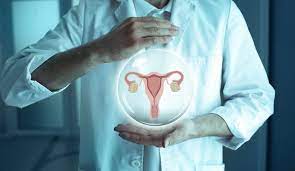Egg Freezing

Egg Freezing in Sirsa, Haryana
Egg freezing(Cryopreservation), a remarkable advancement in the realm of fertility treatment, offers a solution for preserving reproductive cells and tissues for future use. This technique involves the freezing and storage of eggs, sperm, embryos, and even ovarian or testicular tissues at very low temperatures, ensuring their viability is maintained over extended periods. Cryopreservation in Sirsa, Haryana has revolutionized fertility treatment by providing individuals and couples with the opportunity to preserve their fertility potential and address various life circumstances. Whether facing medical treatments that might compromise fertility, seeking to delay childbearing for personal or career reasons, or addressing certain genetic considerations, cryopreservation offers a pathway to preserve the chance of conceiving and building a family in the future. This innovative technique has empowered individuals to take control of their reproductive health and make informed choices about their fertility journey.
Cryopreservation, in the context of fertility treatment, is a sophisticated technique used to preserve eggs, sperm, or embryos at extremely low temperatures. By freezing these reproductive materials, they can be stored for an extended period and later thawed for use in assisted reproductive technologies (ART) like in vitro fertilization (IVF) or intracytoplasmic sperm injection (ICSI). Cryopreservation offers individuals and couples the opportunity to preserve their fertility for future use, especially in cases where there are concerns about age-related fertility decline, medical treatments that might affect fertility or other personal reasons.
The cryopreservation process involves several steps:
- Egg or Sperm Collection: For women, eggs are collected after ovarian stimulation through a minor surgical procedure called egg retrieval. For men, a semen sample is collected.
- Cryoprotectant Addition: To prevent ice crystal formation that could damage cells during freezing, a cryoprotectant solution is added to the eggs, sperm, or embryos.
- Freezing: The reproductive materials are then gradually cooled to very low temperatures, often using liquid nitrogen. This process preserves their viability by minimizing the formation of damaging ice crystals.
- Storage: Once properly frozen, the eggs, sperm, or embryos are stored in specialized containers called cryopreservation tanks. These tanks are kept in highly controlled environments with consistent ultra-low temperatures.
- Thawing: When the preserved materials are needed, they are thawed carefully. The cryoprotectant is gradually removed to prevent harm to the cells.
- Assisted Reproductive Techniques: Thawed eggs, sperm, or embryos can be used in ART procedures like IVF or ICSI, where they are fertilized or transferred into the uterus.
Vitrification technology is an advanced cryopreservation technique utilized in fertility treatment to preserve and store biological materials, particularly eggs (oocytes) and embryos. Cryopreservation in Haryana, India involves cooling these materials to extremely low temperatures, effectively halting their biological processes, and storing them for future use. Vitrification is a superior method within cryopreservation due to its rapid cooling process, which minimizes the formation of ice crystals that could potentially damage the delicate cellular structures of eggs and embryos.
In the context of fertility treatment, vitrification offers several key advantages:
- Higher Survival Rates: Vitrification's fast cooling rate prevents the formation of damaging ice crystals. As a result, eggs and embryos have higher survival rates when thawed for use in future assisted reproductive procedures.
- Improved Egg and Embryo Quality: Vitrification has been associated with better preservation of the structural integrity and viability of eggs and embryos. This can result in improved chances of successful fertilization and subsequent pregnancy.
- Flexibility: Vitrified eggs and embryos can be stored for longer periods without compromising their quality. This provides patients with greater flexibility in timing their fertility treatments and family planning.
- Optimized Fertility Preservation: Vitrification is particularly valuable for individuals facing medical treatments that could potentially affect their fertility, such as cancer treatments. It allows them to preserve their eggs or embryos before undergoing these treatments, increasing the likelihood of future successful pregnancies.
- Egg Banking: Vitrification has facilitated the establishment of egg banks, where a diverse range of eggs can be frozen and stored, offering a broader selection for individuals and couples seeking donor eggs for fertility treatments.
- Reduction in Multiple Pregnancy Risk: Vitrification allows for the storage of a smaller number of high-quality embryos, reducing the need for multiple embryo transfers and subsequently lowering the risk of multiple pregnancies.
Vitrification technology has revolutionized the field of assisted reproductive technology, providing more efficient and effective options for preserving fertility and achieving successful pregnancies. It has become an essential component of modern fertility treatments, offering hope and solutions to individuals and couples seeking to build or expand their families.
The main situations in which cryopreservation is commonly recommended include:
- Egg Freezing (Oocyte Cryopreservation): Egg freezing is often recommended for women who want to preserve their fertility for medical or personal reasons. Medical reasons might include undergoing treatments that could affect fertility, such as cancer treatments. Personal reasons could include delaying childbearing due to career or personal circumstances.
- Sperm Freezing (Sperm Cryopreservation): Sperm freezing is advised for men who need to preserve their sperm due to upcoming medical treatments, such as chemotherapy, radiation therapy, or surgery that could affect their fertility. It's also used by individuals who want to safeguard their fertility before undergoing a vasectomy.
- Embryo Cryopreservation: During IVF, multiple embryos may be produced. If more embryos are generated than needed for the current cycle, the excess embryos can be cryopreserved for future use. This provides individuals or couples the option to attempt pregnancy without undergoing another full IVF cycle.
- Surrogacy: In cases of surrogacy, embryos created through IVF can be cryopreserved until the surrogate is ready for embryo transfer.
Cryopreservation in Sirsa, Haryana provides individuals and couples with greater flexibility in their family planning journey. It allows them to preserve their reproductive cells or embryos at a specific point in time when their fertility is at its best and use them when the time is right for pregnancy.
In conclusion, cryopreservation has emerged as a vital component of fertility treatment, offering significant benefits to individuals and couples pursuing assisted reproductive techniques. This innovative technique involves freezing and preserving eggs, sperm, or embryos at ultra-low temperatures, allowing them to be stored for extended periods without compromising their viability. Cryopreservation has revolutionized fertility preservation by providing solutions for various scenarios, including delaying childbearing due to medical treatments, age-related fertility decline, and personal circumstances.
By safeguarding reproductive materials through cryopreservation in Sirsa, Haryana, individuals can enhance their future chances of conception, even when faced with potential fertility challenges. Moreover, cryopreservation mitigates the urgency of making immediate reproductive decisions and provides a sense of empowerment and control over one's fertility journey.
Book Your Free Consultation Now
OTHER TREATMENTS

Reproductive Surgery
Reproductive surgery involves surgery in the field of reproductive medicine.

Infertility Assessment Male
Infertility is defined as trying to get pregnant with frequent, unprotected sex for at least a year with no success.

Infertility Assessment Female
Infertility is defined as trying to get pregnant with frequent, unprotected sex
